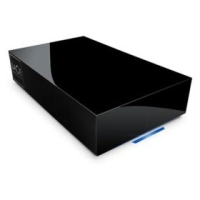Up until about 5-10 years ago, the performance gains in computers were huge from one generation to the next. Tasks that took all night soon took an hour, then 15 minutes, then 3 minutes, and so on. You felt these and they changed the way you worked. Eventually, hardware got beyond the point where it changed what you did and just became an “oh that’s nice” effect.
I recently decided, after months of hemming and hawing, to replace my main workstation in my home office. The previous one was a c2008 midrange Dell that has served me well. I had been using some better hardware at my job, a decent desktop with an SSD and then a decent laptop, also SSD. When I went freelance, I splurged on the best laptop I could find, with the exception of it not having an SSD, but rather twin 7200rpm drives in RAID 0. It has an amazing 17″ screen, 8GB RAM, i7 CPU, etc. It ran me $3200, and I figured I’d replace the drives at some point rather than spend the extra $1k from the manufacturer. I wasn’t in any rush because it felt as fast as my previous SSD boxes so I wasn’t anticipating it being worth the expense, much less the time spent reinstalling.
As for my new desktop, I went similarly all-out. It’s an i7-2600k, 16GB Corsair Vengeance 1600MHz RAM (the most you can reasonably buy at the moment), 2 x 120 GB Intel 510 SSD in RAID on an MSI Z68A-G65 mainboard. The video card is an nVidia GTX 460 SE, which is not really in the same league as the rest of the hardware but this is primarily a work computer. 600W power supply, Cooler Master HAF X case, and Windows 7 Professional and it came in at about $1800 altogether, which actually isn’t bad. It was very easy to put together, probably 90 minutes, and booted fine the first time I powered it on.
I’ve been using it for the past day, and the difference is astonishing. It’s not just fast, it’s different, and I think I’ve just figured out why.
The most important performance metric for modern workstations isn’t how fast it completes arbitrary tasks, it is the percentage of how many of your tasks completely instantly.
This computer, compared to every other computer I’ve used, Macs, PCs, Linux, whatever, does far more things without any delay whatsoever. So much so that my rhythm is off and I’m actually a little uncomfortable at the moment (I know this will pass). The familiar delays I was used to, even when they were 50-100ms, whether opening a file or pulling up an autocompletion are gone.
I guess my point is that if you spend all day on a computer and think that there’s no point in upgrading any more except to replace things that break, I think you will be pleasantly surprised if you decide to splurge a bit.

 I recently bought a
I recently bought a 
 A few weeks ago I picked up
A few weeks ago I picked up